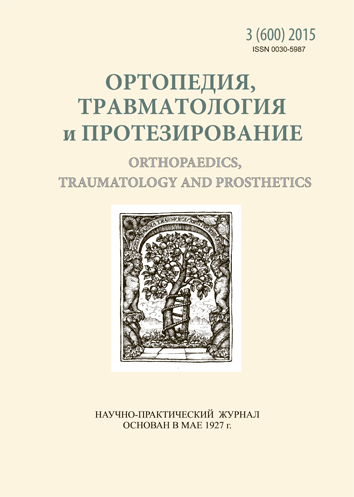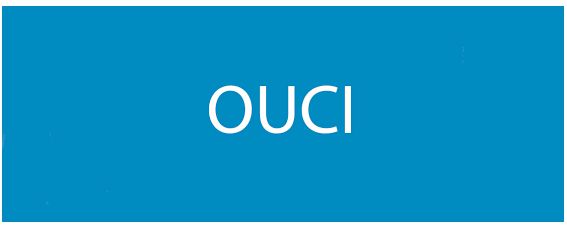Reciprocal orthoses in rehabilitation system in children with progressing neuromuscular pathology
DOI:
https://doi.org/10.15674/0030-59872015387-90Keywords:
children, progressive neuromuscular disorders, function of walkig, rehabilitation, orthosis with reciprocal mechanismAbstract
Children with progressive neuromuscular disorders need complex rehabilitation the main element of which is verticalization of patients by means of orthosis systems after the conservative and/or surgical preparation. One of the ergonomic devices for passive, passive-active walking are reciprocal orthoses design features of which provide a back-and-forth (reciprocal) walking in patients.
Objective: To determine the feasibility and efficacy of reciprocal orthosis in the rehabilitation of children with progressive neuromuscular disorders.
Methods: The results of the clinical, radiological and physiological studies of 41 children with a lack of gait due to progressive neuromuscular disorders in age between 2 and 12 years after 1.3 and 5 years. The main group consisted of children who have used for passive-active walk reciprocal orthosis — 23 with spinal amyotrophy, 2 with progressive muscular dystrophy and with 2 myopathic syndrome. The control group consisted of patients who are in the process of motor rehabilitation have used of locking orthosis systems — 10 children with spinal amyotrophy, and 4 with progressive muscular dystrophy.
Results: The training walking with reciprocal orthosis allowed to restore the function of independent movement in it in 9 (33 %) children, to increase the overall motor activity (Test Hammersmith), to increase the bioelectrical activity of the lower limbs muscles, to reduce the deficit in living lung capacity, to maintain the function of the cardiovascular and pulmonary systems.
Conclusion: Using of the orthosis with reciprocal mechanism is significantly more effective in the rehabilitation of children with progressive neuromuscular disorders comparing to conventional interlocking orthosis systems.
References
- Guk Yu. M. Orthopedic manifestations of different forms of progressing muscular dystrophia / Yu. M. Guk, A. P. Kris-Pugach, A. M.Zima. — Pryluki, 2009. — 120 p.
- Modern clinical-therapeutic questions of proximal spinal muscular atrophy / V. G. Vaharlovsky, V. N. Komantsev, V. A. Lyubimenko [et al.] // Neurosurgery and neurology of children's age. — 2008. — № 3. — P. 38–48.
- Grinio L. P. Atlas of nervous — muscular diseases / L. P.Grinio. — M.: LLC « Publishing house АНС », 2004. — 167 p.
- Early clinical-instrumented diagnostics and therapy of quickly and slowly progressive muscular dystrophias and amyotrophias / S. K. Evtushenko, M. R. Shaimurzin, O. S. Evtushenko [et al.] // International neurologic journal. — 2007. — № 4 (14). — P. 14–30.
- Kris-Pugach A. P. Modern view on progressing muscular dystrophia as an orthopedic problem / A. P. Kris-Pugach, Yu. M. Guk, A. M.Zima // Bulletin of orthopedics, traumatology and prosthetics. — 2006. — N 3. — P. 4–15.
- Emery A. E. N. Duchenne muscular dystrophy / A. E. N. Emery. — 2nd ed. — New York, Oxford University Press, 1988. — 256 p.
- A modified Hammersmith functional motor scale for use in multi-center research on spinal muscular atrophy / K. J. Krosschell, J. A. Maczulski, T. O. Crawford [et al.] / Neuromuscul Disord. — 2006. — Vol. 16 (7). — P. 417–426.
- Regular exercise prolongs survival in type 2 spinal muscular atrophy model mouse / C. Grongard, O. Biondi, A. S. Armand [et al.] // J. Neuroscience. — 2005. — Vol. 25 (33). — P. 7115–7622.
- Reliability of the Hammersmith functional motor scale for spinal muscular athrophy in a multicentric study / E. Mercuri, S. Messina, R. Battini // Neuromuscular Disoders. — 2006 — Vol. 16 (2). — P. 93–98.
- Application of a reciprocal orthosis in medical rehabilitation of children with nervous — muscular diseases / I. N. Chernysheva, S. D. Shevchenko, V. G. Petrov, V. V. Pivovarov // Orthopaedics, traumatology and prosthetics. — 2009. — № 3 (576) — P. 16–19, doi: http://dx.doi.org/10.15674/0030-59872009316-19.
- Result of application of an orthosis with a reciprocal mechanism in rehabilitation of children with progressing neuromuscular diseases / I. N. Chernysheva, S. D. Shevchenko, V. G. Petrov [et al.] // Materials of a scientific — practical conference with international participation — Kyiv, 2011. — P. 140–142.
- Chernysheva I. N. The algorithm of restoring of a vertical pose and movement in patients with a nervous — muscular lesion // I. N. Chernysheva, S. D. Shevchenko // Orthopaedics, traumatology and prosthetics. — 2011. — № 2 (583). — P. 55–9. doi: http://dx.doi.org/10.15674/0030-59872011255-59.
- The results of clinical use of a device for equivalent walking in children with serious neurologic diseases / A. D. Salieieva, V. G.Petrov, I. N.Chernysheva [et al.]: Theses of reports of XI Russian National Congress with international participation «The Man and his health». — Saint Petersburg, 2006. — P. 52.
- The possibilities of use of the device for equivalent walking in children with neurologic diseases / V. G.Petrov, H. N.Vishchenko, I. N.Chernysheva [et al.]: Theses of reports of XIV congress of orthopedists — traumatologists of Ukraine (Odessa, 21–23 September 2006.). — Odesa, 2006. — P. 101–102.
- Rehabilitation of children with progressing nervous — muscular diseases / A. D. Salieieva, V. G. Petrov, I. N. Chernysheva [et al.]: Theses of reports of XII Russian national congress with international participation «Man and his health». — Saint Petersburg, 2007.
- Chernysheva I. N. Characteristics of impairment of motor activity of children with progressing neuromuscular diseases (the review of literature) / I. N. Chernysheva, S. D. Shevchenko // Orthopaedics, traumatology and prosthetics. — 2013. — № 2 (590). — P. 122–125, doi: http://dx.doi.org/10.15674/0030-598720131122-125.
- The techniques of rehabilitation of children with the use of reciprocal orthosis (RGO) in some neurologic diseases / V. G. Petrov, I. N. Chernysheva, E. V. Vareshnyuk, S. V. Kovaleva // All-Russian prosthetists & orthopedists Guild Bulletin. — 2008. — № 3 (33). — P. 53–55.
- Chernysheva I. N. Characteristics of orthotic treatment of children with nervous — muscular diseases / I. N. Chernysheva // Orthopaedics, traumatology and prosthetics. — 2010. — № 1 (578) — P. 124–132, doi: http://dx.doi.org/10.15674/0030-598720101124-132.
- Patent 82776, Ukraine, IPC А63В 23/04. A device for walking and standing / Bubliy V. V., Vatolinskiy L. E., Shchetinina L. G. [et al.]; applicant and patent owner Ukrainian Research Institute for Prosthetics and Rehabilitation. — № а200610144; Appl. 22.09.06; Publ.12.05.08; Bul. N 9.
- Development of complex program of rehabilitation of children with neurologic diseases with the use of the reciprocal device (RGO): Report on Research / Ukrainian Research Institute for Prosthetics and Rehabilitation, supervisor V. G. Petrov. UDC 616-036.868; 616-009.11; № state registration 0106U006002 — Kharkov, 2007. — 100 p.
Downloads
How to Cite
Issue
Section
License
Copyright (c) 2015 Irina Chernyshova

This work is licensed under a Creative Commons Attribution 4.0 International License.
The authors retain the right of authorship of their manuscript and pass the journal the right of the first publication of this article, which automatically become available from the date of publication under the terms of Creative Commons Attribution License, which allows others to freely distribute the published manuscript with mandatory linking to authors of the original research and the first publication of this one in this journal.
Authors have the right to enter into a separate supplemental agreement on the additional non-exclusive distribution of manuscript in the form in which it was published by the journal (i.e. to put work in electronic storage of an institution or publish as a part of the book) while maintaining the reference to the first publication of the manuscript in this journal.
The editorial policy of the journal allows authors and encourages manuscript accommodation online (i.e. in storage of an institution or on the personal websites) as before submission of the manuscript to the editorial office, and during its editorial processing because it contributes to productive scientific discussion and positively affects the efficiency and dynamics of the published manuscript citation (see The Effect of Open Access).














